Chinese money plants (Pilea peperomioides), are relative newcomers to the world of commercially produced, widely available houseplants. As the new kids on the block, Chinese money plants’ light requirements are not yet common knowledge. However, at the speed with which they have taken over, common knowledge it shall be. Soon.
These trendy houseplants, which are native to China, didn’t reach the shores of North America until the latter part of the 20th century. For many years they were traded among plant enthusiasts online and at plant swaps. They have only been available commercially in the United States since 2016. In the intervening years, they have become a favorite for their shiny green saucer-like leaves.
It is these saucer-shaped leaves that give the plant its nicknames UFO plant and pancake plant. Missionary plant is a nickname honoring the Norwegian missionary who brought the plant to Europe. His habit of propagating the plant and sharing it with his friends is what gave rise to the sobriquets friendship plant and pass-along plant.
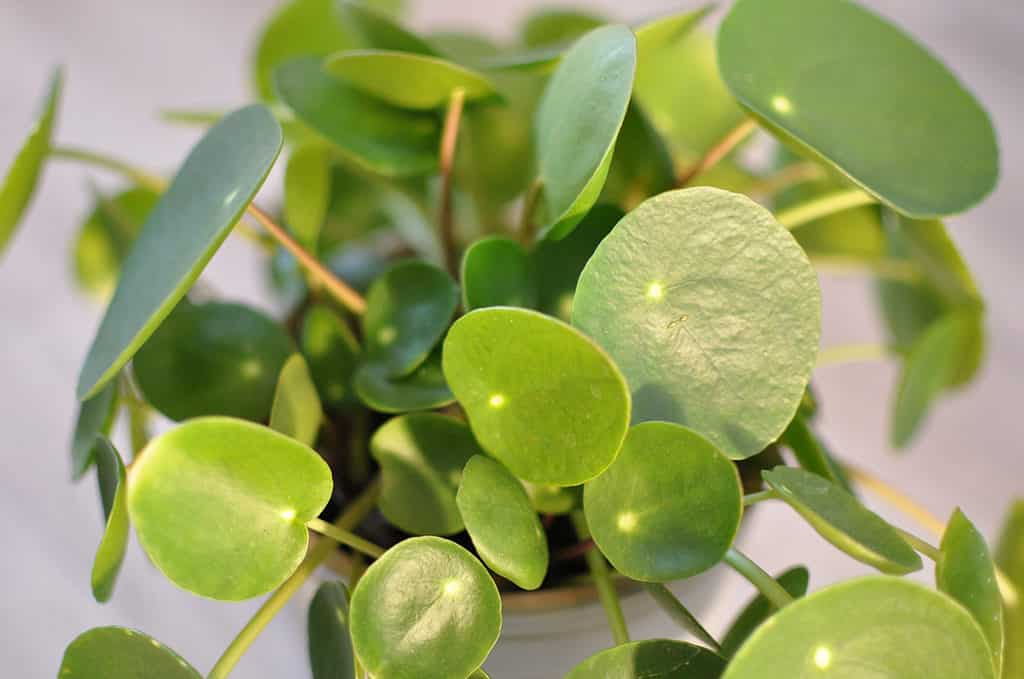
Its saucer-shaped leaves are why the plant is called the UFO plant and pancake plant.
©Mehta Photography/Shutterstock.com
So, how much light do these popular ornamentals need? Keep reading to learn everything you need to know about Chinese money plant light requirements.
Chinese Money Plant Light Requirements: Indoor Lighting Explained
There are five main types of light that plants can be exposed to in indoor environments:
- Direct light
- Indirect light
- Medium light
- Low light
- Artificial light
How does indirect light compare to direct light? What’s the difference between medium light and low light? When is artificial necessary? These are all valid questions. However, that answer is a rather evasive, it depends.
A variety of factors are at play where inside lighting is concerned and plant lovers have a variety of opinions regarding these factors. So, let’s break it down into small, palatable bites, one type at a time.
Chinese Money Plant Light Requirements: Direct Light
Direct light is sunlight that is shining directly through a window. It is the most intense light to which a plant can be exposed.
In the morning hours, east-facing windows receive direct light. Mid-day to early afternoon, south-facing windows are in direct light. Late afternoon sun typically spills through west-facing windows. Windows on the north side of buildings are never in the path of direct light.
Direct light that shines through east windows in the morning hours is bright but is not as long-lasting or as intense as the mid-day sun beating down on south-facing windows. South-facing windows easily provide the most direct light to a plant.
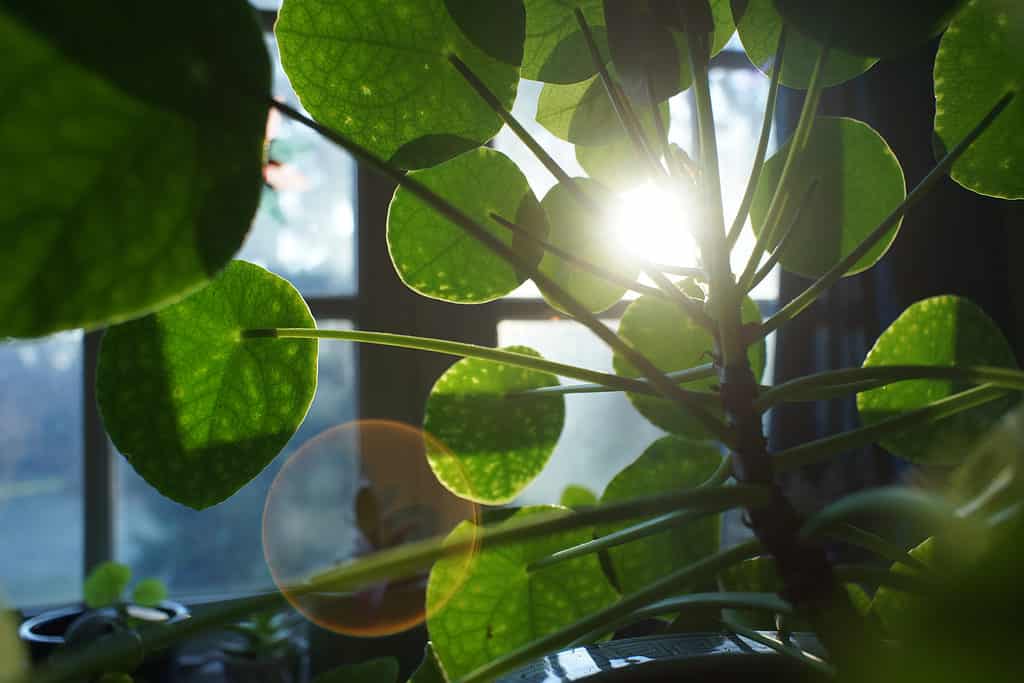
In the morning hours, east-facing windows receive direct light.
©Floris Verweij/Shutterstock.com
Western windows provide direct light in the late afternoon. This light is hotter than the direct light that east side windows receive in the morning.
South-facing and west-facing windows are typically too warm for most common houseplants. The heat is too intense and can result in scorched leaves if care is not taken.
Indirect Light
Indirect light comes in through windows at an angle. Windows have periods of indirect light that can be followed by direct light and vice versa.
South-facing windows receive indirect light in the morning before direct light pours through them around mid-day, right around the time the direct sun in eastside windows is staring to wane, becoming indirect light.
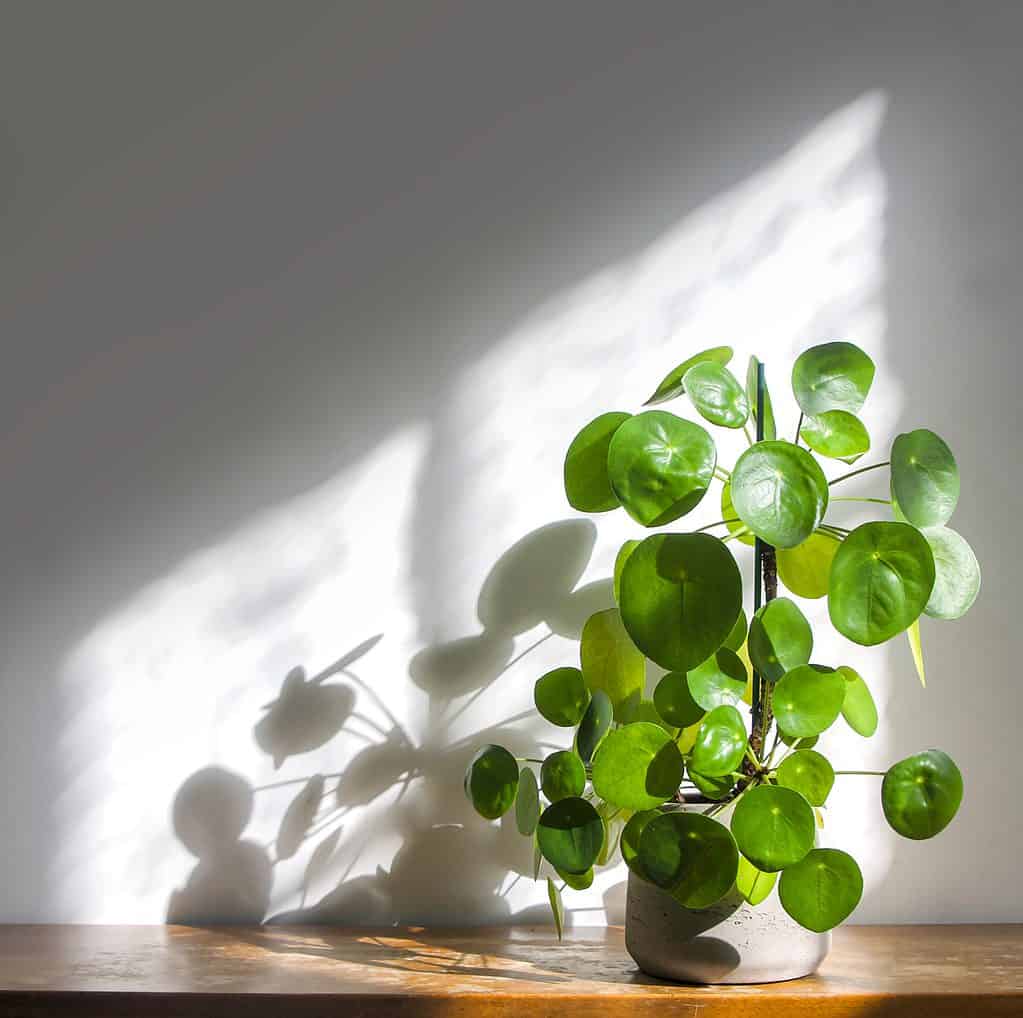
Indirect light comes in through windows at an angle.
©Kulbir G/Shutterstock.com
Likewise, as the direct mid-day sun begins to shift west, south-facing windows return to indirect light as west-facing windows heat up with direct afternoon sun.
Windows that are on the north side of buildings never receive direct light, and only see indirect light for a few moments, if ever, depending on many factors.
Medium Light
Medium light is the light that penetrates the center of a room. It is less intense than either direct or indirect light. Depending on factors such as size and number of windows, medium light will infiltrate rooms for long stretches. Medium light provides steady light without the possibility of singed leaves
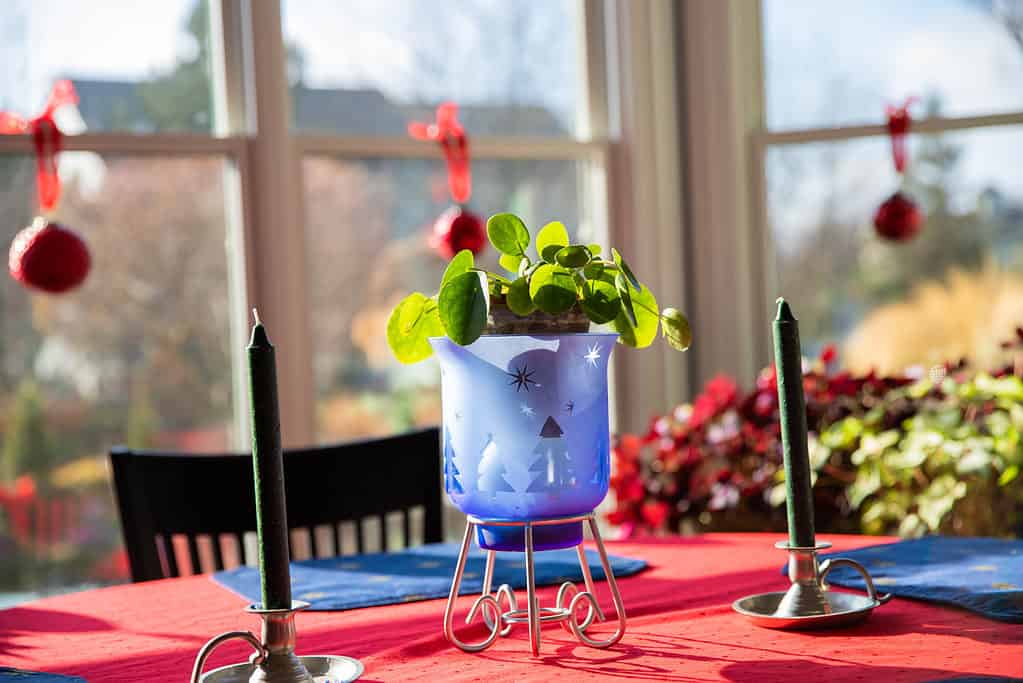
Medium light is the light that penetrates the center of a room.
©Molly Shannon/Shutterstock.com
Low Light
Low light can be the result of many different factors. Rooms that only have north-facing windows, rooms with small windows, and rooms in which the windows have obstructed views, from other buildings or overgrown landscape plants, are candidates for low light. There aren’t too many plants that thrive in low light and those that do tend to be slowing growers.
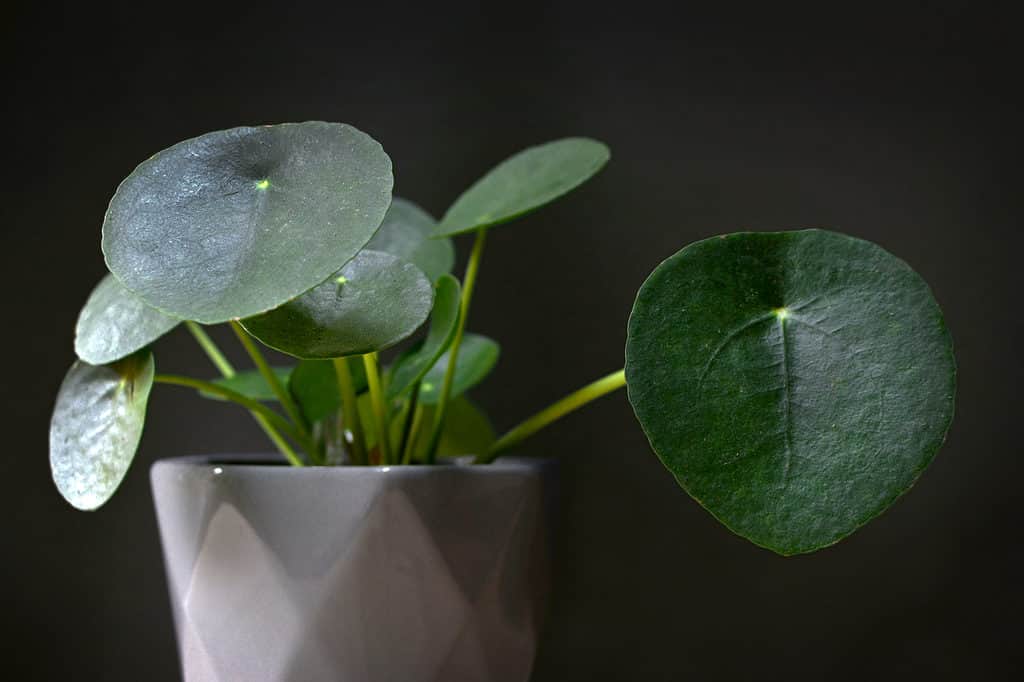
There aren’t too many plants that thrive in low light and those that do tend to be slowing growers.
©Shadow Inspiration/Shutterstock.com
Artificial Light
Artificial light is used in the absence of sunlight. Windowless rooms and interior office spaces depend on artificial light to make them habitable for human beings and their plants.
Though regular incandescent and fluorescent lighting will keep a plant from dying, full-spectrum lighting is more desirable. Full-spectrum or broad-spectrum lights provide a balance between long and short wavelengths that mimic sunlight. There are a variety of full-spectrum bulbs available, making it a breeze to find one that suits your specific needs.
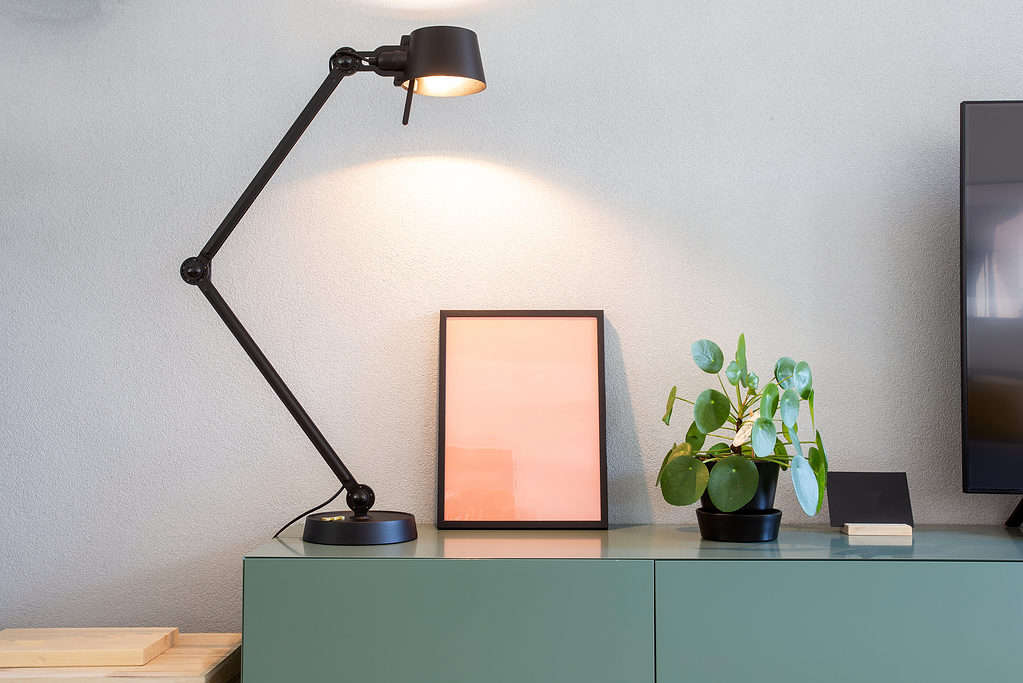
Full-spectrum lights provide a balance between long and short wavelengths that mimic sunlight.
©A-photographyy/Shutterstock.com
Chinese Money Plant Light Requirements: Optimum Placement
Chinese money plants are not finicky when it comes to light requirements. Convention suggests that they grow best in bright, indirect light. This lighting is achieved in several different ways.
Because east-facing windows receive their direct light from the morning sun, they are typically not too hot or bright. Once the sun moves to the south, east-side windows receive a good amount of bright, indirect light, though amounts vary based on the season. This makes east-facing windows a splendid spot for a Chinese money plant.
However, if the plant is not placed directly in front of the window, west-facing windows have enough bright indirect light to keep Chinese money plants happy, making a room with west-facing windows an ideal location for your plant.
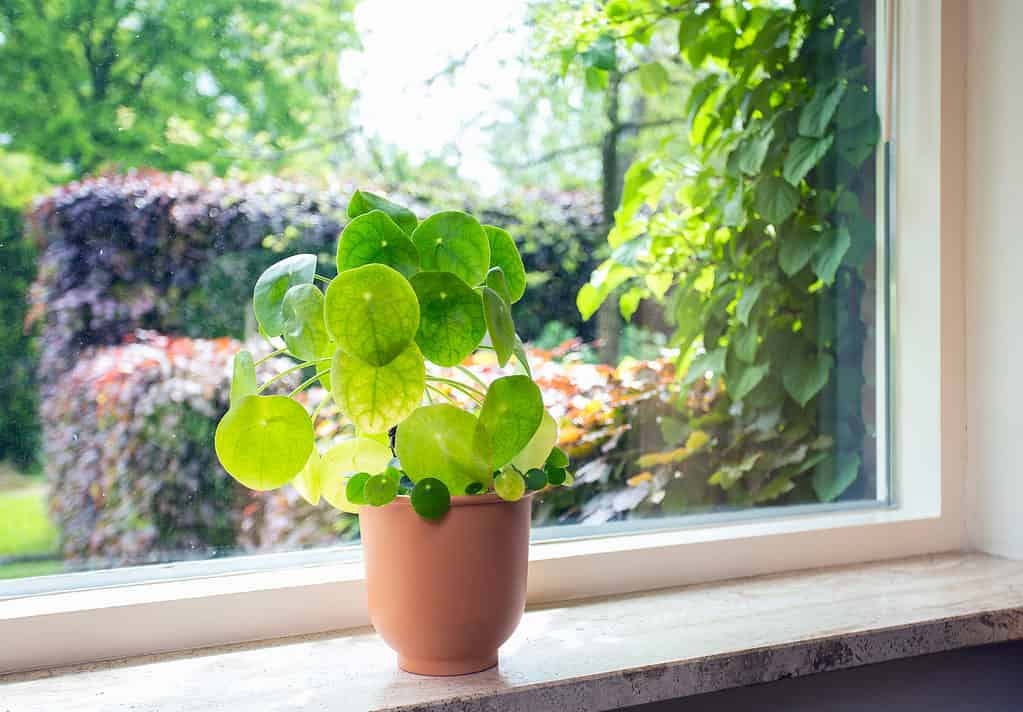
East-facing windows are a splendid spot for a Chinese money plant.
©A-photographyy/Shutterstock.com
The same holds true for those brilliantly bright south-facing windows. If you keep your Chinese money plant out of the path of the bright mid-day sun, at a distance, closer to the room’s center, it will thrive with light from a south-facing window.
Finally, even in rooms with only north-facing windows, or no windows at all, the introduction of artificial light, preferably one made for that purpose, will allow you to grow your Chinese money plant even in the saddest, darkest corner.
North, south, east, or west, wherever you choose to place your Chinese money plant, shower it with love and it will be fine.
Of note: Turning your Chinese money one-quarter turn (45 degrees) weekly will aid uniform growth.
Up Next:
- Growing an Indoor Chinese Money Plant
- How to Propagate a Chinese Money Plant
- Chinese Chestnut vs. American Chestnut
The photo featured at the top of this post is © Kulbir G/Shutterstock.com
Thank you for reading! Have some feedback for us? Contact the AZ Animals editorial team.






